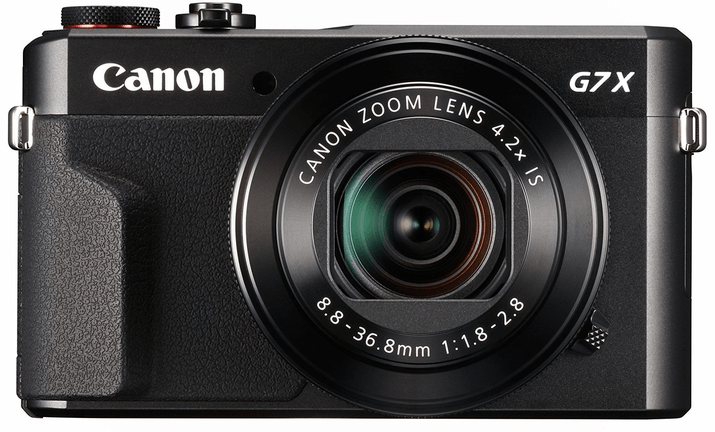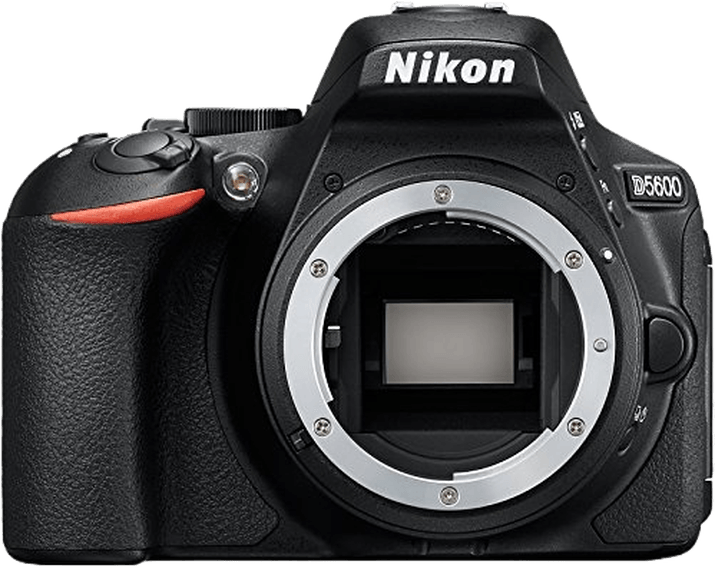Canon PowerShot G7 X Mark II vs Nikon D5600 Comparison
Canon PowerShot G7 X Mark II

Nikon D5600

The Nikon D5600 comes out on top with a score of 66/100, while the Canon PowerShot G7 X Mark II trails behind with a score of 59/100. Both cameras were released in 2016 and had a similar launch price of around $700. They share similarities in their specifications, such as their announcement and release dates.
The Nikon D5600 outperforms the Canon G7 X Mark II mainly due to its DSLR camera type, which offers more advanced features and better image quality. On the other hand, the Canon G7 X Mark II is a compact camera, which makes it lighter (319g) and smaller (106 x 61 x 42mm) than the Nikon D5600 (465g, 124 x 97 x 70mm). This compact size and weight advantage make the Canon G7 X Mark II more portable and easier to carry around.
Taking into account each camera’s strengths and weaknesses, the Nikon D5600 is the better choice for those seeking advanced features and superior image quality. However, the Canon PowerShot G7 X Mark II is perfect for those who prioritize portability and convenience.
Canon PowerShot G7 X Mark II vs Nikon D5600 Overview and Optics
The Nikon D5600 wins the optics comparison with a score of 65/100, while the Canon PowerShot G7 X Mark II scores 58/100. Both cameras share some specifications, such as a CMOS sensor, no image stabilization, and similar processors – the Canon with a Digic 7 and the Nikon with an Expeed 4.
The Nikon D5600 outperforms the Canon in several aspects. It has a higher megapixel count at 24.2 compared to Canon’s 20, which allows for better resolution and image detail. The Nikon also boasts a better DXOMARK sensor score of 84, as opposed to Canon’s 79, indicating improved overall image quality. Furthermore, the Nikon D5600 has a larger sensor size (APS-C) than the Canon (1″), which contributes to better low-light performance and dynamic range. Additionally, the Nikon has a lens mount (Nikon F DX), allowing users to change lenses for various photography needs.
On the other hand, the Canon PowerShot G7 X Mark II has a faster shooting speed at 8 frames per second, compared to Nikon’s 5. This feature benefits action and sports photographers who need to capture fast-moving subjects.
In terms of optics, the Nikon D5600 is the superior choice due to its higher megapixel count, better sensor score, larger sensor size, and lens mount. However, the Canon PowerShot G7 X Mark II may appeal to those who prioritize a faster shooting speed. Ultimately, the decision depends on individual preferences and photography needs.
Canon PowerShot G7 X Mark II vs Nikon D5600 Video Performance
When comparing the video capabilities of the Canon PowerShot G7 X Mark II and the Nikon D5600, both cameras tie with a video score of 70/100. These cameras share several video specifications, including a maximum video resolution of Full HD (1920 x 1080), a maximum video frame rate of 60fps, and built-in time-lapse functionality.
Focusing on the Canon PowerShot G7 X Mark II, this camera offers excellent video quality with its Full HD resolution and 60fps frame rate. The built-in time-lapse functionality adds creative options for users, allowing them to capture stunning time-lapse videos without additional equipment or software.
On the other hand, the Nikon D5600 also provides great video quality with its Full HD resolution and 60fps frame rate. Like the Canon PowerShot G7 X Mark II, the Nikon D5600 includes built-in time-lapse functionality, giving users the ability to create captivating time-lapse videos.
Despite their identical video scores and shared specifications, it is essential for potential buyers to consider other factors, such as their specific needs, budget, and preferences, when choosing between these two cameras. Both the Canon PowerShot G7 X Mark II and the Nikon D5600 are capable of delivering high-quality videos, making them suitable choices for various users, from casual hobbyists to more serious videographers.
Canon PowerShot G7 X Mark II vs Nikon D5600 Features and Benefits
The Nikon D5600 wins in the features comparison with a score of 72/100, while the Canon PowerShot G7 X Mark II scores 70/100. Both cameras share several specifications, making them quite similar in terms of features.
Common features in both cameras include a 3-inch touchscreen, flip screen, absence of GPS, and the presence of WIFI and Bluetooth connectivity. The screen resolution is also nearly the same, with the Canon having 1,040,000 dots and the Nikon having 1,037,000 dots. These shared specifications make both cameras suitable for modern photography needs.
The Nikon D5600 has a slightly larger screen size of 3.2 inches compared to the Canon’s 3 inches. This larger screen size provides a better viewing experience for photographers when reviewing images or navigating the camera’s menu.
On the other hand, the Canon PowerShot G7 X Mark II has a marginally higher screen resolution. While the difference is small, it may result in slightly sharper image previews on the camera’s screen.
Considering the scores and specifications, the Nikon D5600 is the winner in this comparison due to its larger screen size. However, the Canon PowerShot G7 X Mark II remains a competitive option with its marginally higher screen resolution. Both cameras offer a range of useful features, making them suitable choices for photographers looking for a modern, feature-rich camera.
Canon PowerShot G7 X Mark II vs Nikon D5600 Storage and Battery
The Nikon D5600 outperforms the Canon PowerShot G7 X Mark II in storage and battery with a score of 43/100 compared to Canon’s 29/100. Both cameras share similarities, such as having a single memory card slot and accepting SD, SDHC, and SDXC (UHS-I compatible) memory cards.
The Nikon D5600 excels with a significantly longer battery life, offering 970 shots, while the Canon G7 X Mark II provides only 265 shots. The D5600 uses an EN-EL14a battery type, which contributes to its extended battery performance.
On the other hand, the Canon G7 X Mark II has the advantage of USB charging, a feature absent in the Nikon D5600. This allows for convenient charging options, especially on-the-go.
Taking these factors into account, the Nikon D5600 proves to be superior in battery life, making it ideal for longer shooting sessions. In contrast, the Canon G7 X Mark II offers the convenience of USB charging, catering to users who prioritize flexibility in charging methods.
Canon PowerShot G7 X Mark II vs Nikon D5600 – Our Verdict
Are you still undecided about which camera is right for you? Have a look at these popular comparisons that feature the Canon PowerShot G7 X Mark II or the Nikon D5600:
